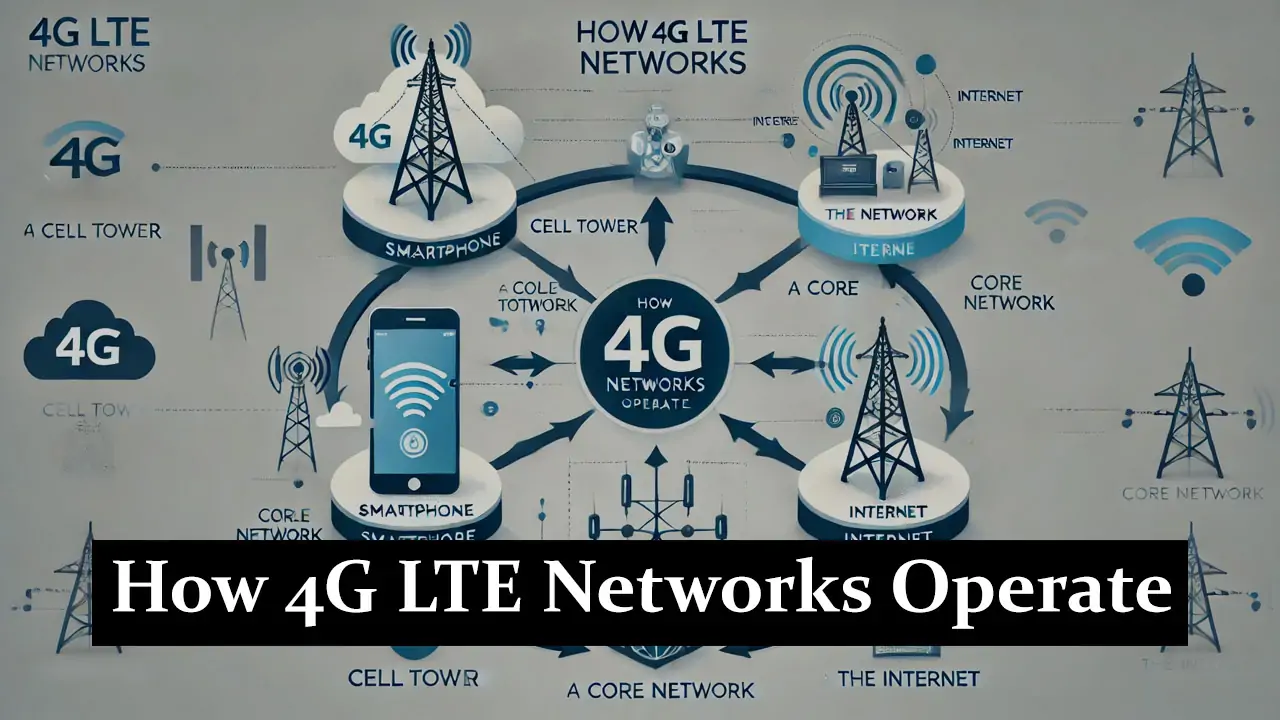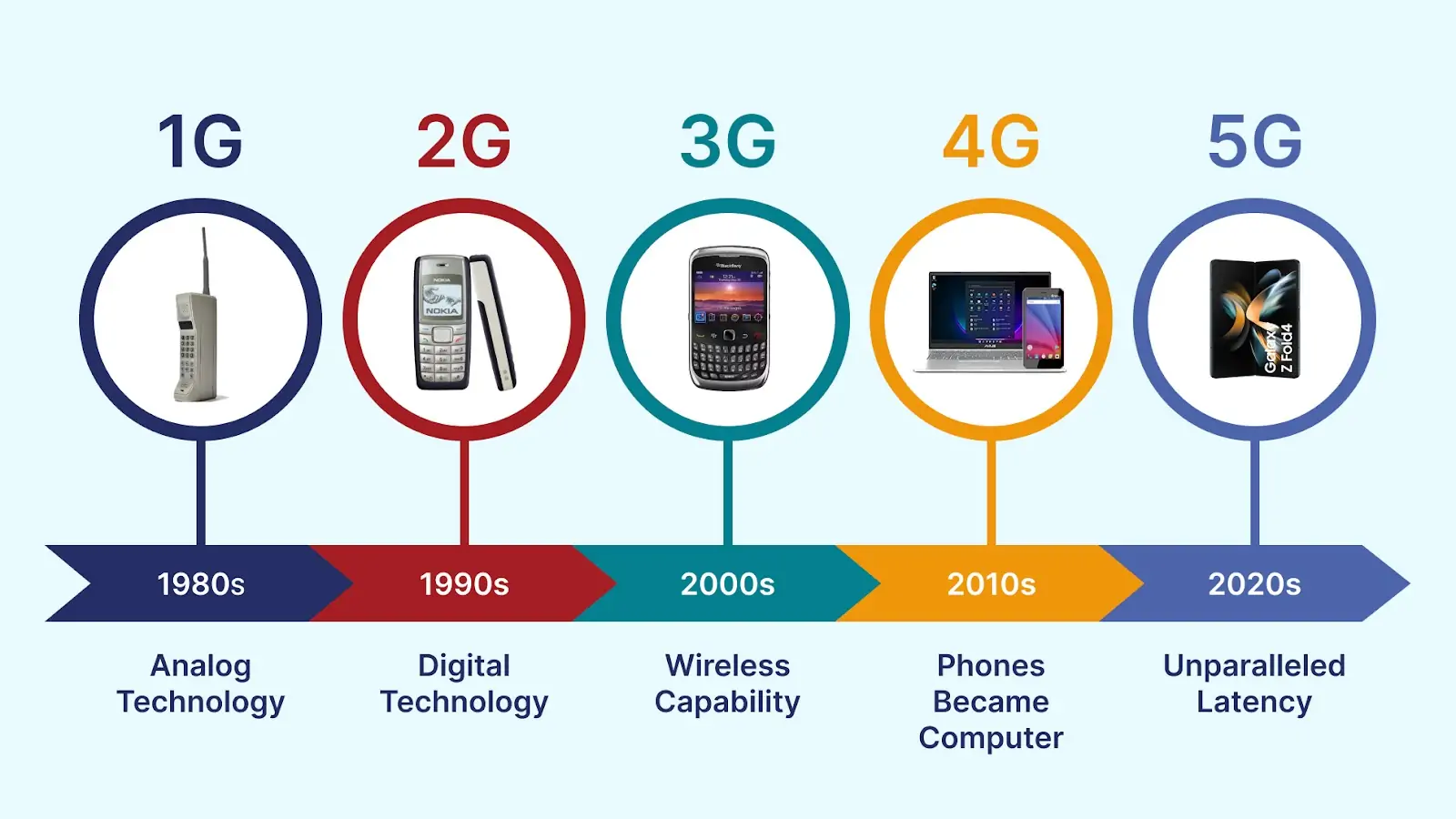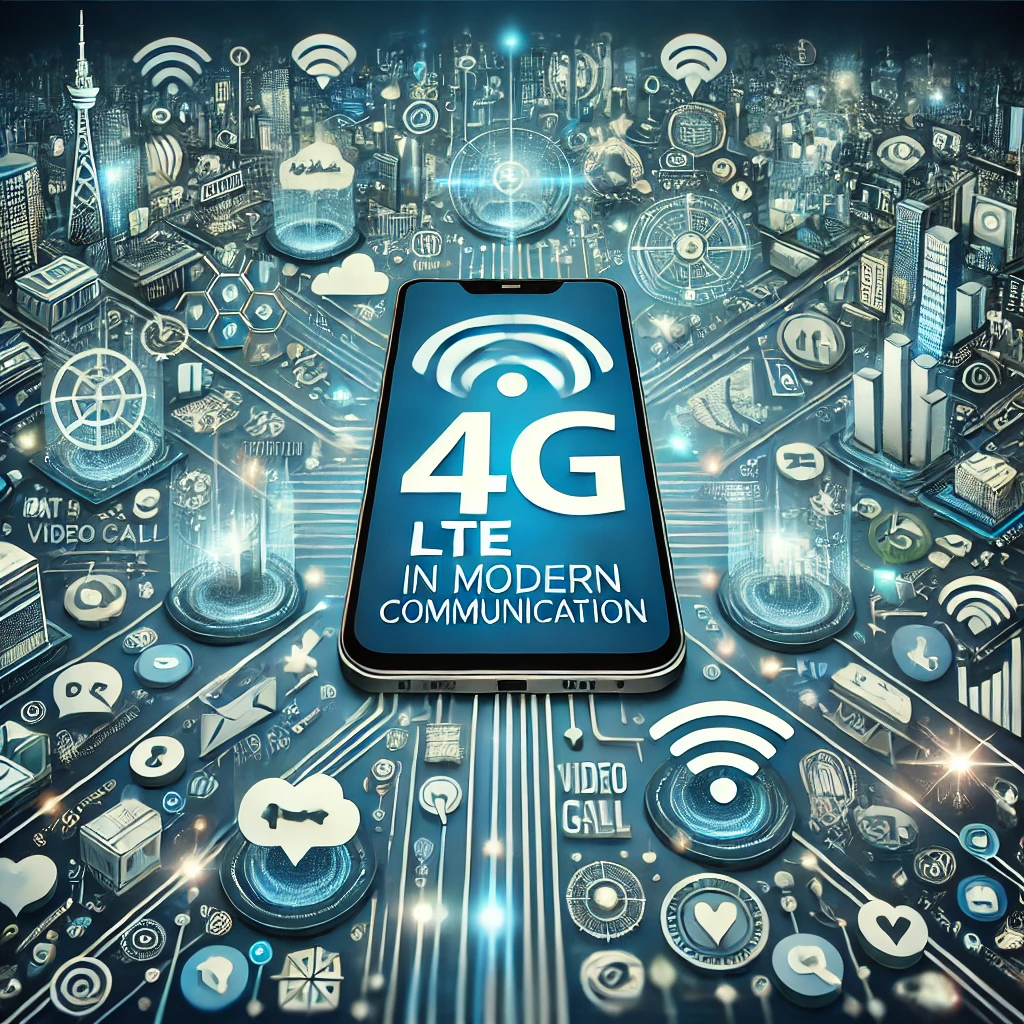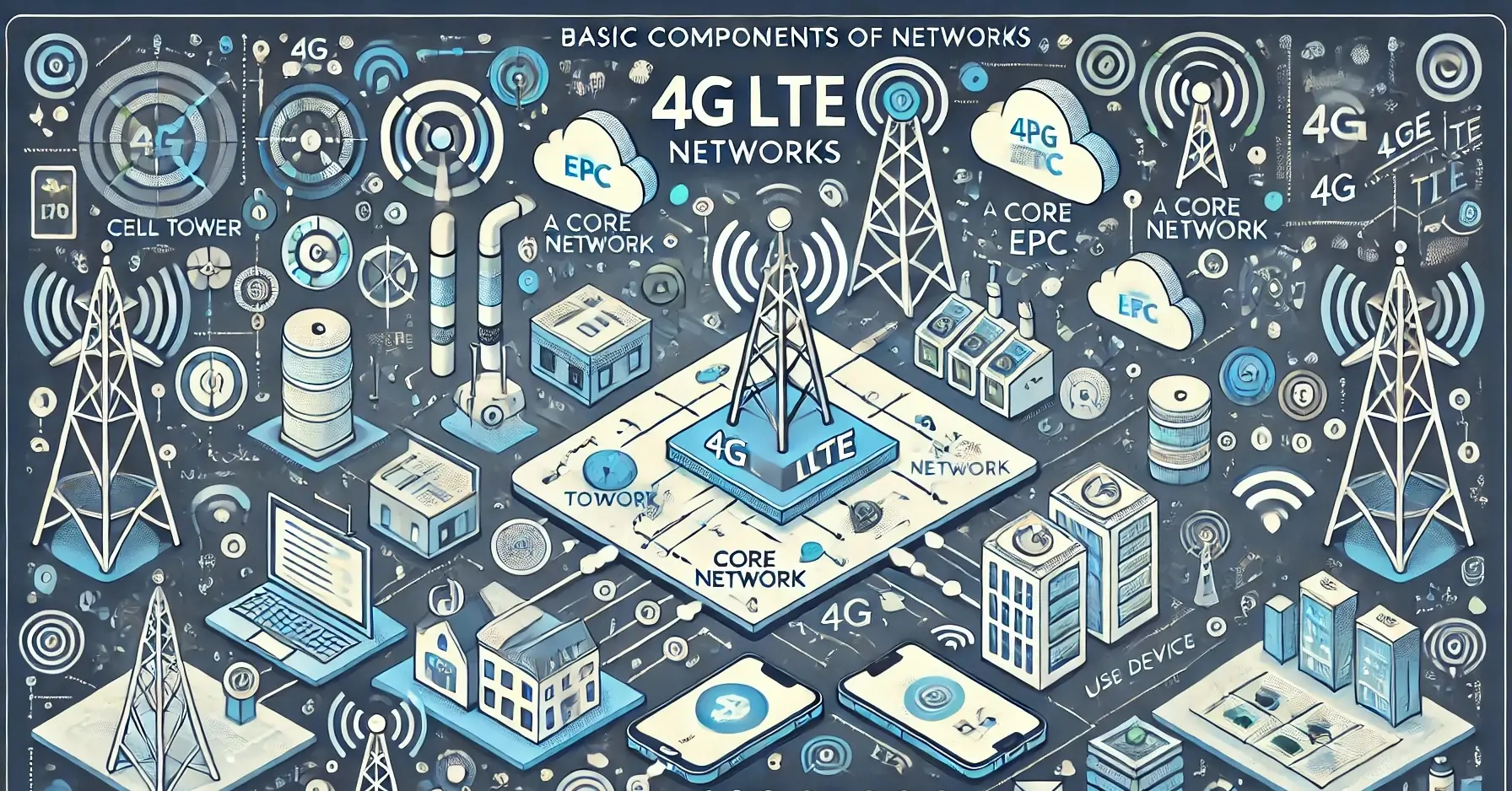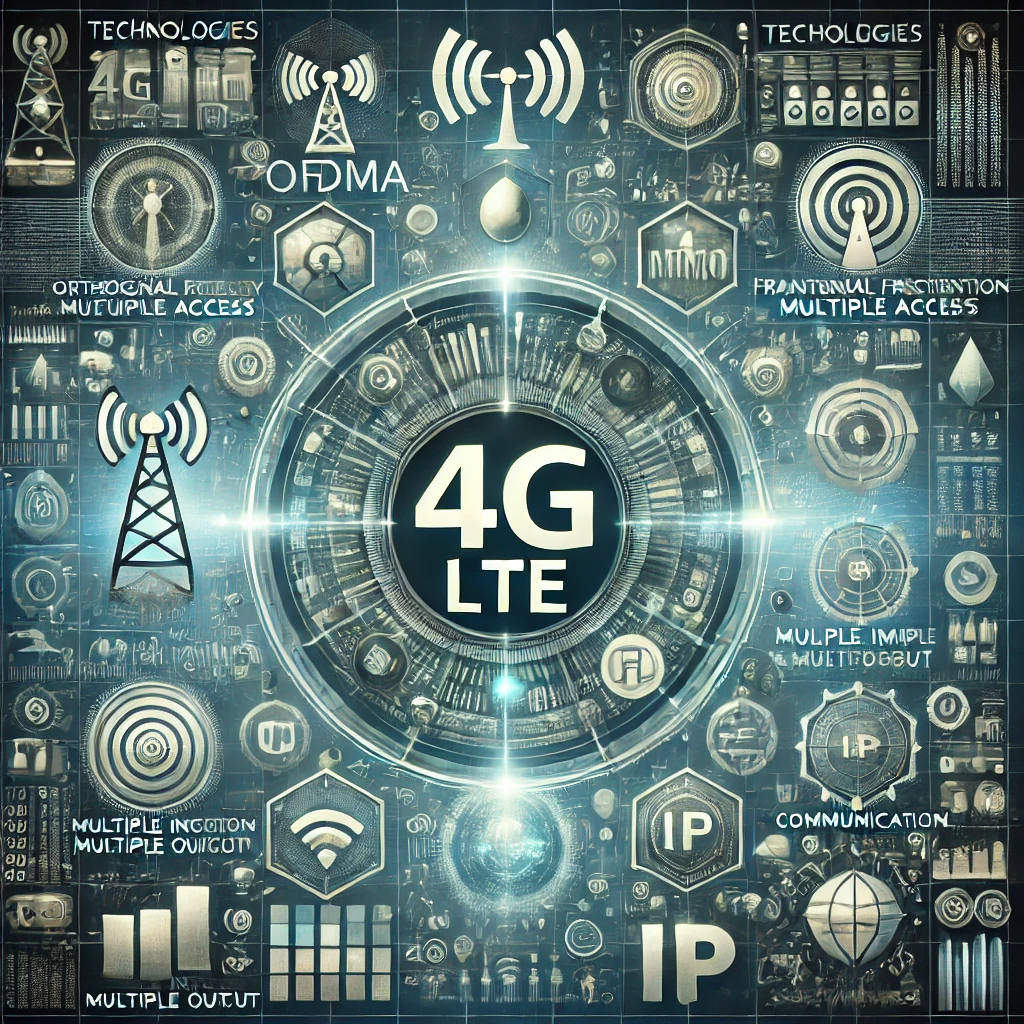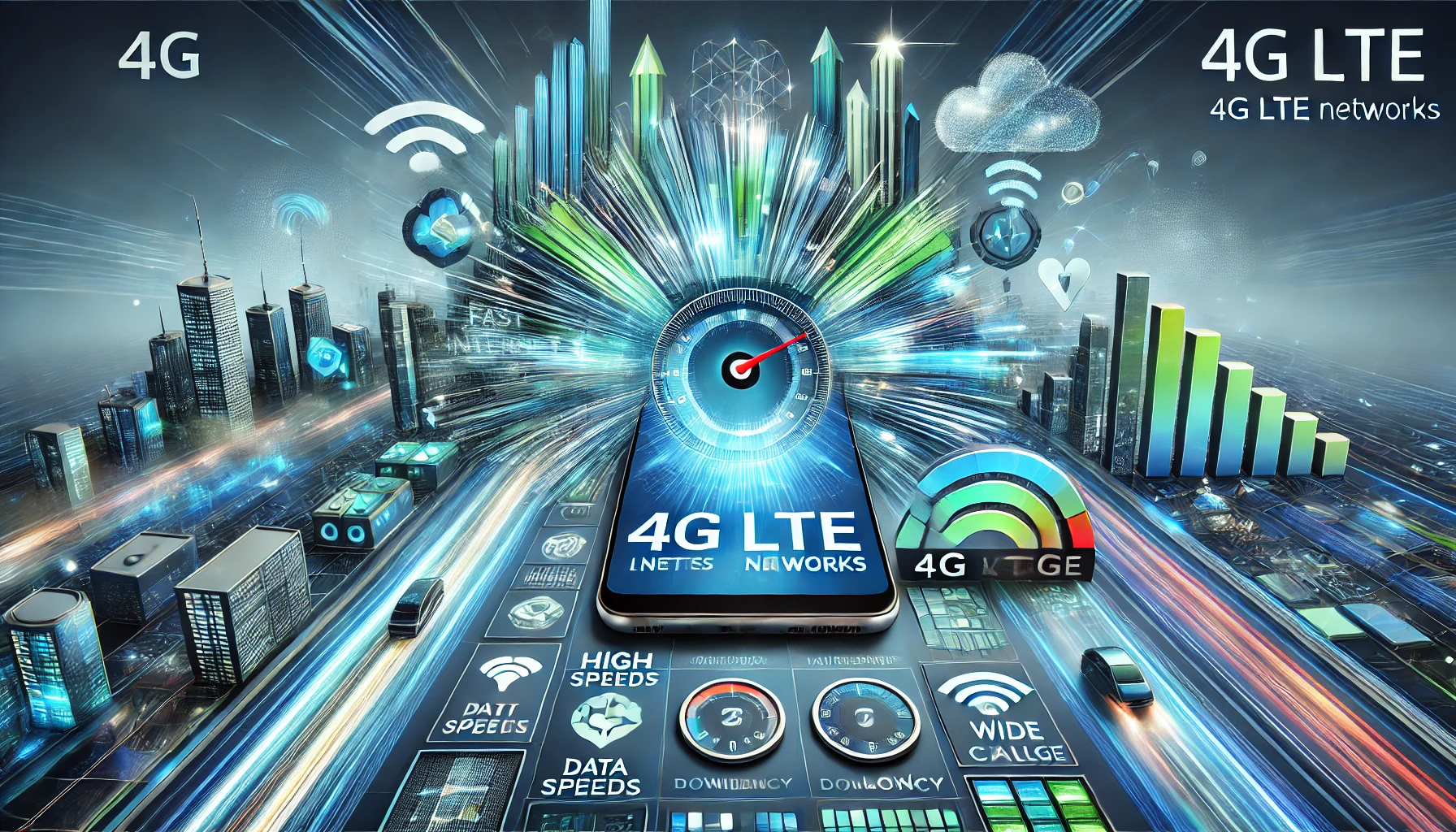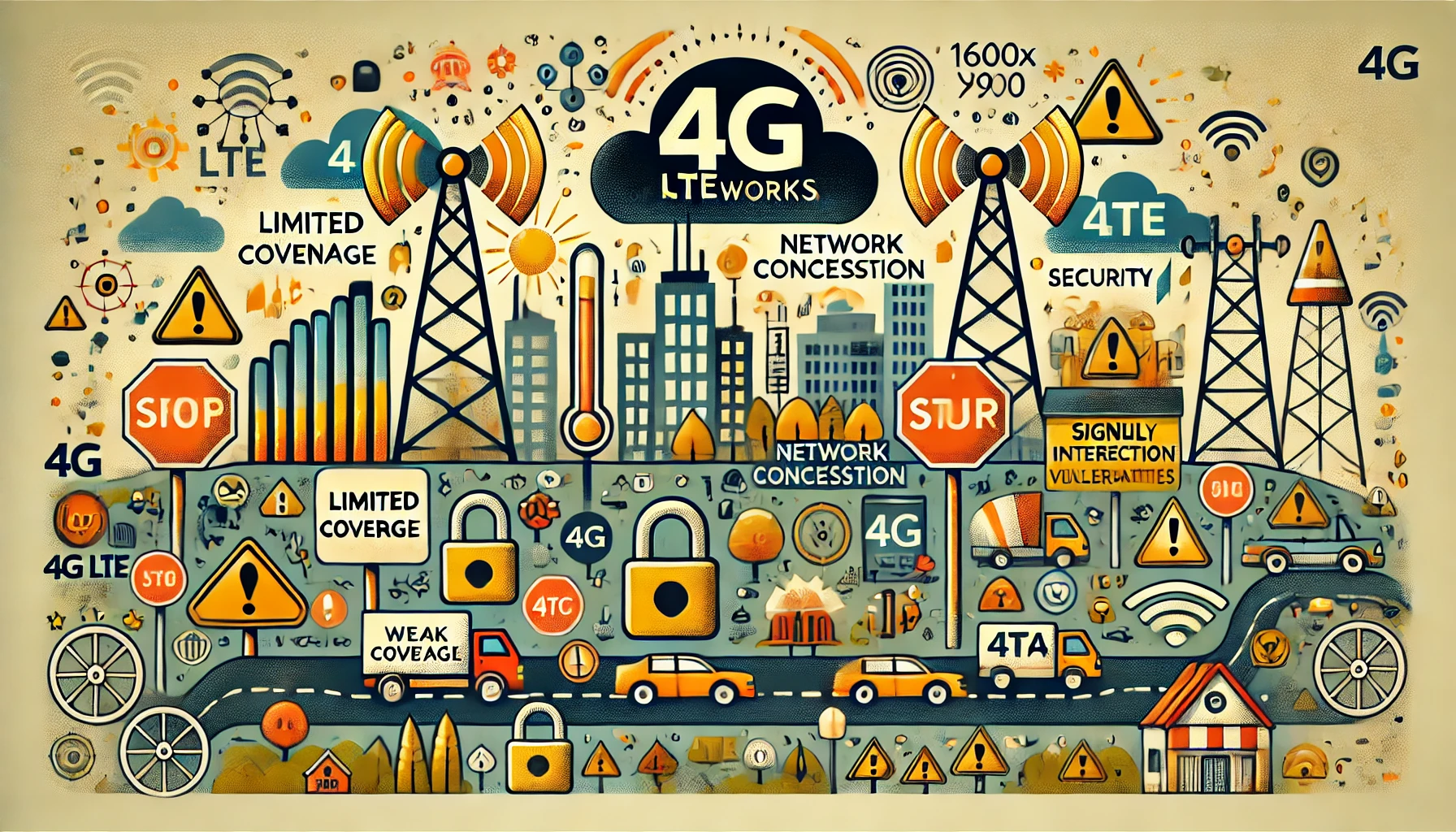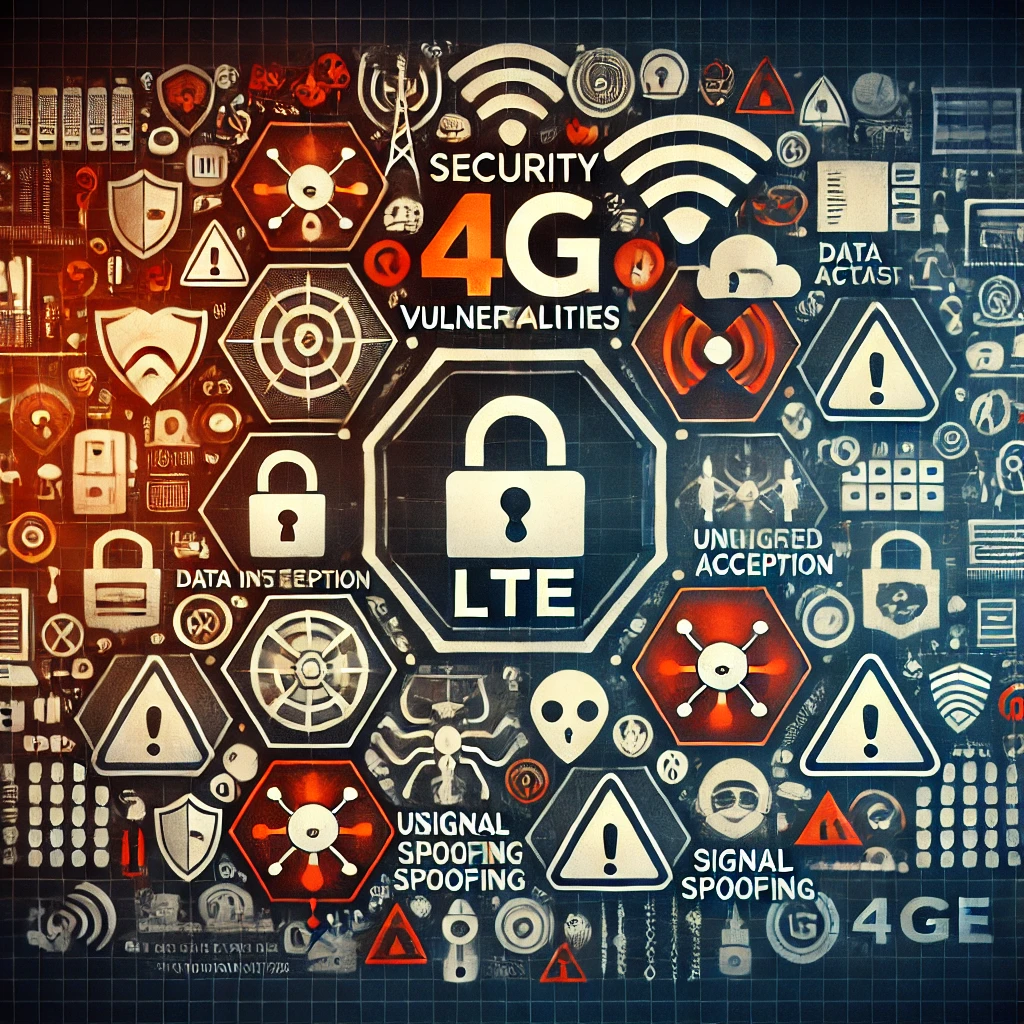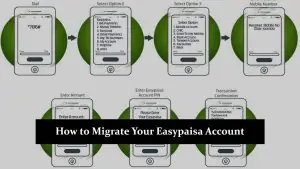In the world of mobile communication, network generations have evolved significantly, from the basic analogue 1G networks to the ultra-fast 5G networks. Each generation brought advancements that transformed how we connect and communicate. Among these, 4G LTE has profoundly impacted modern communication, providing the backbone for high-speed internet, seamless streaming, and reliable connectivity.
Mobile Network Generations (1G to 5G)
- 1G: The first generation of mobile networks introduced analogue voice communication.
- 2G: Brought digital voice and SMS, enabling more secure and efficient communication.
- 3G: Introduced mobile data, allowing for internet access and multimedia messaging.
- 4G: Revolutionized mobile internet with high-speed data and IP-based communication.
- 5G: The latest generation, promising ultra-low latency, massive connectivity, and unprecedented speeds.
Importance of 4G LTE in Modern Communication
4G LTE (Long-Term Evolution) has transformed mobile communication, offering faster data speeds, lower latency, and a more reliable connection. It has enabled innovations like video conferencing, real-time gaming, and IoT applications, making it an essential component of today’s digital world.What is 4G LTE?
4G is the fourth generation of mobile network technology designed to provide faster data transfer rates and improved network capacity. LTE, or Long-Term Evolution, is a standard for wireless broadband communication that significantly enhances 4G’s capabilities, delivering high-speed internet and improved network efficiency.
Evolution from Previous Generations (2G, 3G)
4G LTE evolved from the limitations of 2G and 3G networks, which offered basic voice communication and slower data speeds. While 2G focused on digital voice and SMS, and 3G introduced mobile data, 4G LTE aimed to deliver a seamless, high-speed internet experience, supporting bandwidth-intensive applications.
Key Features and Benefits of 4G LTE
- High-speed data transfer: Supports fast download and upload speeds.
- Low latency: Enables real-time communication and reduced lag.
- Enhanced capacity: Handles more simultaneous connections efficiently.
- Better coverage: Improved connectivity in various environments.
Basic Components of 4G LTE Networks
- Evolved Packet Core (EPC): The core network architecture of 4G LTE is responsible for data routing and mobility management.
- Mobility Management Entity (MME): This entity handles signaling and control functions, such as device authentication and mobility management.
- Serving Gateway (SGW): Acts as a router, forwarding user data packets within the network.
- Packet Data Network Gateway (PGW): Manages data transfer between LTE and external IP networks.
- Evolved Universal Terrestrial Radio Access Network (E-UTRAN): The air interface that connects user devices to the LTE network.
- eNodeB (LTE Base Stations): Base stations that communicate directly with user devices, providing the radio access network.
- User Equipment (UE): Devices like smartphones, tablets, and IoT gadgets that connect to the LTE network.
How 4G LTE Works
Radio Interface
- OFDMA (Orthogonal Frequency-Division Multiple Access): A technology used in downlink communication to divide frequency bands into smaller sub-bands.
- SC-FDMA (Single-Carrier Frequency-Division Multiple Access): Used in uplink communication to improve power efficiency and reduce signal interference.
Data Transmission
- Downlink and Uplink Processes: Efficient mechanisms for sending and receiving data between the network and user devices.
- Carrier Aggregation for Increased Bandwidth: Combining multiple frequency bands to provide higher data rates and better performance.
Network Attach Procedure
- Connecting a Device to the Network: Establishing a connection between a user device and the LTE network.
- Authentication and Security Measures: Ensuring secure communication through robust authentication and encryption protocols.
Key Technologies in 4G LTE
- MIMO (Multiple Input, Multiple Output): Enhances data throughput and signal quality by using multiple antennas for transmission and reception.
- Carrier Aggregation: Combines multiple carriers to achieve higher data rates and better spectrum utilization.
- VoLTE (Voice over LTE): Enables high-quality voice calls over the LTE network, offering clearer and more reliable communication.
Data Transmission Process
1. Connection Setup:
How devices connect with the network involves signaling and resource allocation.
2. Data Transfer:
- Packet Switching and Its Advantages: The efficient data transmission method divides data into packets for more reliable and flexible communication.
- Role of IP Addresses and Routing: Critical for directing data packets to their correct destinations across the network.
3. Handover Mechanism:
Ensures seamless transition between cell towers, maintaining an uninterrupted connection as users move.Enhancements and Features
- Carrier Aggregation: Combines multiple carriers to provide higher data rates and improve network performance.
- Voice over LTE (VoLTE): Provides better voice call quality and integrates voice and data services over the same network.
- Quality of Service (QoS): Mechanisms to ensure reliable and efficient service delivery, prioritizing different types of network traffic.
Performance and Quality of Service
4G LTE (Long-Term Evolution) networks represent the fourth generation of mobile communication standards, succeeding 3G networks. These networks have revolutionized mobile device use by providing high-speed internet access, enhanced voice and video communication, and a more reliable connection. Understanding the performance and quality of service (QoS) of 4G LTE networks is crucial for consumers and service providers to ensure optimal usage and continuous improvement.
Performance of 4G LTE Networks
Several key metrics, including data transfer speeds, latency, coverage, and capacity, measure the performance of 4 G LTE networks.
- Data Transfer Speeds:
- Download Speeds: In optimal conditions, 4G LTE offers download speeds ranging from 10 Mbps to over 100 Mbps, significantly faster than 3G networks.
- Upload Speeds: Upload speeds typically range from 5 Mbps to 50 Mbps. These speeds enable quick sharing of large files and seamless video conferencing.
- Latency:
- Latency refers to the time it takes for data to travel from the source to the destination. In 4G LTE networks, latency is typically around 30 to 50 milliseconds, which is lower than in 3G networks but higher than in 5G networks. Low latency is crucial for real-time applications such as online gaming and video calls.
- Coverage:
- 4G LTE networks provide extensive coverage, reaching urban, suburban, and rural areas. The coverage depends on the deployment of cell towers and the frequency bands used.
- Capacity:
- Capacity refers to the network’s ability to handle many simultaneous connections. 4G LTE networks have higher capacity than their predecessors, supporting more users and devices without significant performance degradation.
Quality of Service (QoS) in 4G LTE Networks
QoS in 4G LTE networks ensures that various types of data traffic are prioritized and managed to provide a consistent user experience. Several mechanisms and parameters are employed to maintain high QoS:
- Priority Levels:
- Different types of data traffic (e.g., voice calls, video streaming, web browsing) are assigned different priority levels. This ensures that critical services such as voice calls, and emergency services are given higher priority over less critical data.
- Bandwidth Allocation:
- Bandwidth is allocated dynamically based on the current network load and the priority of the data traffic. This helps in maintaining optimal performance even during peak usage times.
- Error Rates and Packet Loss:
- Advanced error correction techniques and efficient routing protocols minimize error rates and packet loss, ensuring reliable data transmission and high-quality voice and video communication.
- Network Optimization:
- Continuous network optimization is performed to enhance QoS. This includes adjusting network parameters, upgrading infrastructure, and deploying new technologies such as carrier aggregation and MIMO (Multiple Input, Multiple Output).
Challenges and Limitations
4G LTE (Long-Term Evolution) has significantly transformed mobile communication, offering higher data speeds, lower latency, and enhanced network efficiency. However, despite its widespread adoption and numerous advantages, 4G LTE networks face several challenges and limitations. This article explores the key issues associated with 4G LTE networks.
Spectrum Scarcity and Management
Spectrum scarcity is a major challenge for 4G LTE networks. The radio frequency spectrum is a limited resource, and as more devices connect, the demand increases. Efficient spectrum management is crucial to prevent network congestion and ensure seamless connectivity.
Steps to Address Spectrum Scarcity:
- Efficient spectrum allocation by regulatory bodies
- Reallocation of underutilized spectrum bands
- Implementation of dynamic spectrum-sharing techniques
- Investment in spectrum-efficient technologies
Network Congestion
With the rise of smartphones, tablets, and IoT devices, 4G LTE networks often face congestion, especially in urban areas. This leads to slower data speeds and increased latency, affecting user experience.
Steps to Mitigate Network Congestion:
- Investment in network infrastructure upgrades
- Deployment of small cells and distributed antenna systems
- Implementation of carrier aggregation
- Use of advanced traffic management techniques
Coverage Limitations
While 4G LTE has improved coverage, areas, particularly rural and remote regions, still have inadequate service. Expanding coverage to these areas requires significant investment, which may only sometimes be feasible for operators.
Steps to Improve Coverage:
- Investment in network infrastructure in underserved areas
- Use of low-frequency spectrum for better penetration
- Collaboration with government and local authorities
- Deployment of satellite and fixed wireless technologies
Energy Consumption
4G LTE networks and connected devices consume substantial energy. This affects mobile device battery life and increases operational costs for network operators, raising environmental concerns.
Steps to Reduce Energy Consumption:
- Development of energy-efficient network equipment
- Implementation of sleep mode features in network devices
- Optimization of network resource allocation
- Promotion of energy-saving practices among users
Security Vulnerabilities
4G LTE networks are susceptible to cyberattacks, data breaches, and unauthorized access. Ensuring robust security measures, including encryption, authentication, and regular updates, is essential to protect the network and its users.
Steps to Enhance Security:
- Implementation of strong encryption protocols
- Regular security updates and patches
- Use of multi-factor authentication
- Continuous monitoring for suspicious activities
Interference and Signal Quality
Interference from electronic devices, physical obstructions, and environmental factors can degrade 4G LTE signal quality, resulting in dropped calls and slower data rates.
Steps to Mitigate Interference:
- Strategic placement of network infrastructure
- Use of advanced signal processing techniques
- Implementation of beamforming and MIMO technologies
- Regular maintenance and optimization of network equipment
Device Compatibility
Not all devices, particularly older models, are compatible with 4G LTE networks. Ensuring backward compatibility and seamless handovers between 3G and 4G networks can be complex and resource-intensive.
Steps to Address Device Compatibility:
- Promotion of 4G-compatible devices
- Offering affordable device upgrade options
- Ensuring seamless handovers between 3G and 4G networks
- Regular updates to network infrastructure for compatibility
Regulatory and Licensing Issues
Deploying and operating 4G LTE networks requires compliance with various regulatory and licensing requirements, which can vary significantly between regions. Navigating these regulations can be challenging and costly for operators.
Steps to Navigate Regulatory Issues:
- Collaboration with regulatory bodies
- Adherence to international standards and best practices
- Regular review and update of compliance strategies
- Active participation in regulatory discussions and forums
Final Thoughts
4G LTE has significantly impacted modern communication, providing the foundation for high-speed internet and reliable connectivity. As we move towards 5G, the ongoing evolution of mobile network technology promises even greater advancements and possibilities.
